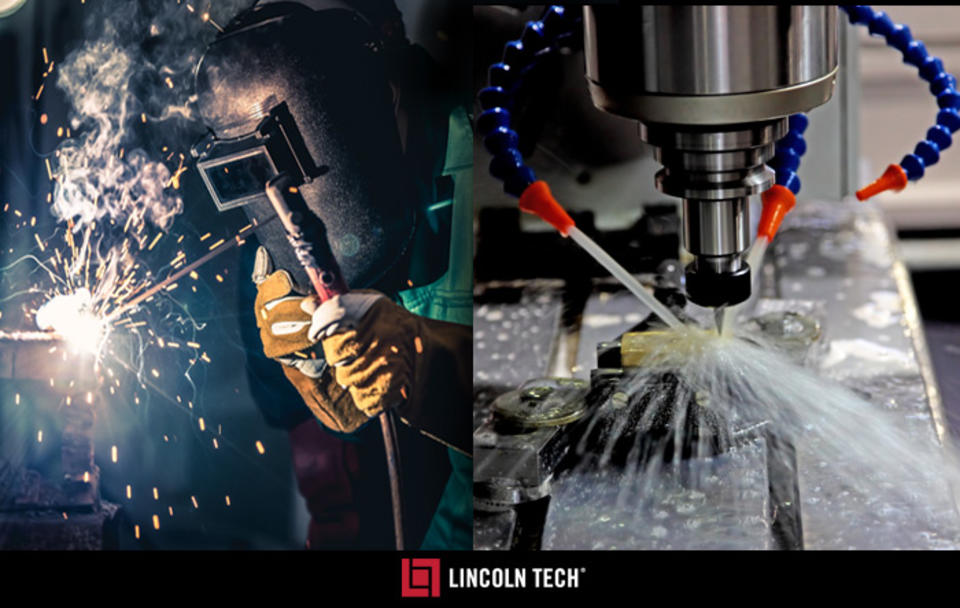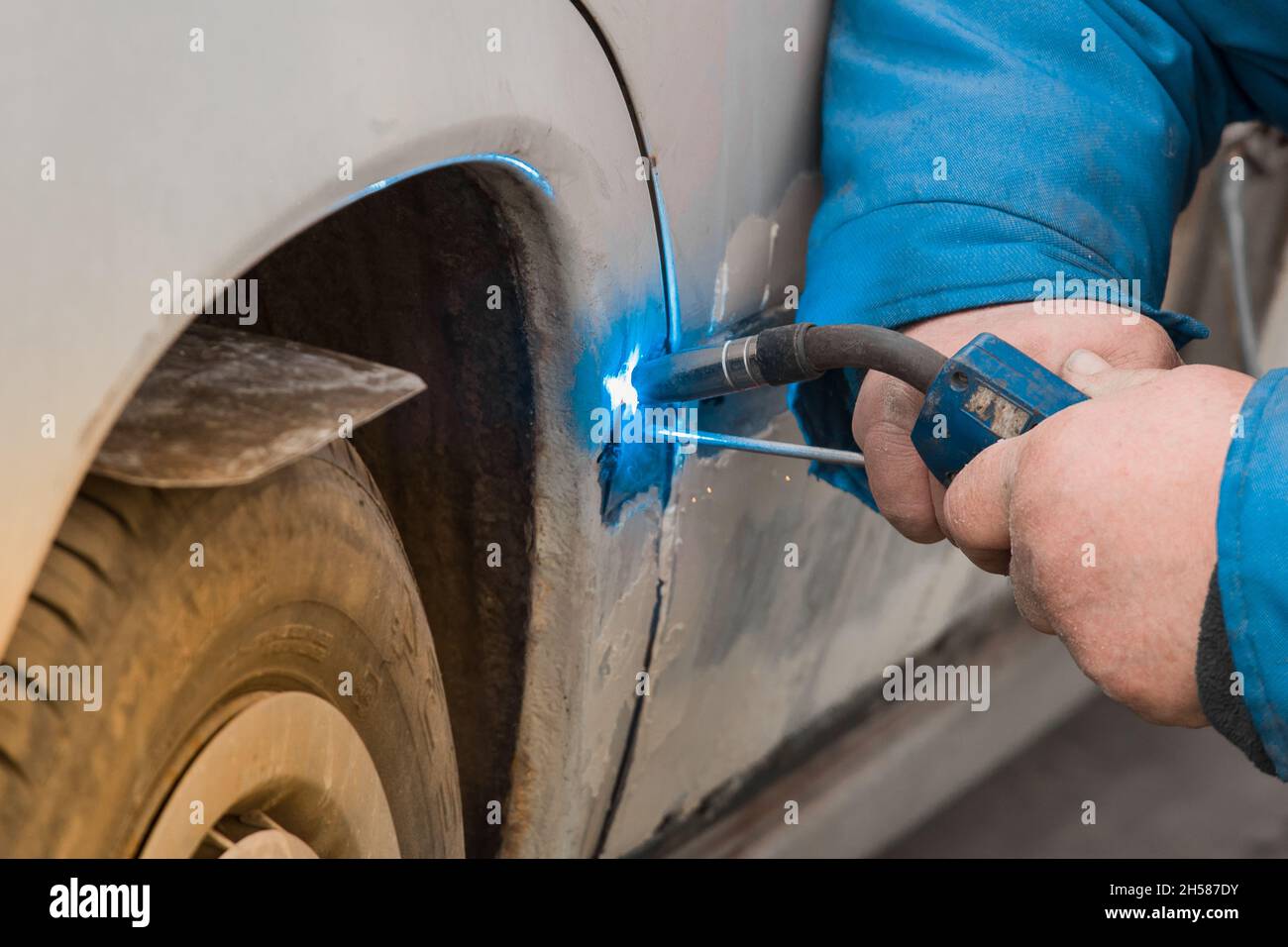Common Welding Repair Service Issues and Exactly How to Address Them Properly
Welding repair services frequently encounter a range of problems that can jeopardize the honesty of the end product. Typical issues include poor infiltration, porosity, and misalignment, to name a few. Each flaw presents unique obstacles that require particular methods for resolution. Recognizing these issues is important for welders aiming to enhance their skills and end results. This discussion will certainly explore these common welding repair service issues and reliable techniques to resolve them.
Insufficient Infiltration
Insufficient infiltration takes place when the weld steel falls short to totally fuse with the base material, leading to weak joints and prospective structural failures. This issue typically originates from insufficient heat input, wrong electrode angle, or inappropriate welding rate. Welders may experience poor penetration due to a mistake of the essential specifications for a specific product density or kind. Additionally, contamination on the base material's surface area can hinder reliable bonding, aggravating the issue. To resolve insufficient penetration, welders need to guarantee suitable setups on their tools and keep a clean work surface. Routine evaluation of welds is advised to determine any type of shortages early, permitting timely corrections and the avoidance of jeopardized architectural honesty in bonded settings up.
Porosity
Porosity is an usual flaw in welded joints that manifests as tiny gas bubbles trapped within the weld metal. This defect can endanger the integrity of the weld, bring about decreased toughness and possible failing under stress. Montana Mobile Welding and Repair. Porosity typically arises from contamination, wetness, or incorrect welding strategies, which permit gases to run away right into the liquified weld pool. To deal with porosity, welders ought to guarantee correct surface prep work, maintain a clean workplace, and make use of ideal welding parameters. Furthermore, choosing the ideal filler product and protecting gas can minimize gas entrapment. Regular assessment and testing of welds can assist recognize porosity early, guaranteeing timely corrective actions are taken, therefore preserving the top quality and integrity of the bonded framework
Imbalance
Misalignment in welding can arise from different elements, including incorrect arrangement and thermal expansion. Comprehending the root causes is necessary for reliable resolution. A number of correction strategies are offered to straighten components and guarantee structural honesty.
Sources of Misalignment
Welding misalignment usually stems from a variety of underlying issues that can jeopardize structural integrity. One main reason is incorrect fit-up of parts before welding, which can bring about voids and unequal surfaces. Variations in thermal expansion during the welding process can additionally result in distortion, especially if the materials being joined have different coefficients of development. In addition, inadequate fixturing and clamping may fall short to hold components firmly in position, bring about movement throughout welding. Badly conserved equipment, including welding equipments and devices, might introduce inconsistencies in the weld bead, further adding to imbalance. Operator error, stemming from inadequate training or experience, can likewise play a substantial duty in creating misaligned welds.

Improvement Strategies Offered
Resolving misalignment properly needs a mix of corrective methods tailored to the particular problems available. One usual method is making use of jigs or components to hold components in the right position during welding, making certain constant positioning. Furthermore, preheating the products can help in reducing distortion and improve fit-up. For significant imbalance, mechanical realignment methods, such as utilizing hydraulic jacks or clamps, can be utilized to fix the setting before welding. Post-weld warmth treatment may additionally be necessary to relieve tensions brought on by misalignment. Mindful assessment and adjustment during the arrangement phase can avoid misalignment problems from becoming substantial troubles, promoting a smoother welding procedure and improving general structural integrity.
Distortion
Distortion is a common challenge in welding that can occur from different variables, including unequal heating & cooling. Understanding the sources of distortion is essential for applying reliable avoidance techniques. Addressing this problem not only boosts architectural honesty however additionally improves the general high quality of the weld.
Sources of Distortion
When based on the extreme warm of welding, materials often undergo adjustments that can bring about distortion. This sensation largely emerges from thermal expansion and contraction throughout the welding procedure. As the weld location warms up, the material increases; upon air conditioning, it acquires, which can create interior stress and anxieties. Furthermore, unequal heating throughout a workpiece can intensify these stress and anxieties, causing warping or flexing. The kind of product likewise plays a considerable role; steels with varying thermal conductivity and coefficients of development may respond in different ways, causing unpredictable distortions. Furthermore, inadequate joint design and insufficient fixturing can contribute to misalignment throughout welding, raising the chance of distortion. Recognizing these reasons is important for reliable welding repair and prevention techniques.
Avoidance Techniques
Reliable avoidance strategies for distortion throughout welding emphasis on managing warm input and making certain proper joint layout. Keeping a regular warmth input assists to minimize thermal expansion and contraction, which can bring about distortion. Making use of strategies such as pre-heating the work surface can also minimize the temperature slope, advertising uniform home heating. In addition, picking proper joint designs, such as T-joints or lap joints, can enhance security and minimize stress concentrations. Carrying out proper fixturing to protect the work surfaces in position additionally aids in keeping alignment during the welding process. Lastly, staggered welding series can disperse heat much more uniformly, preventing local distortion. By applying these techniques, welders can considerably lower the probability of distortion and improve the total quality of their welds.
Fracturing
Breaking is a common concern come across in welding repair work, typically resulting from numerous elements such as improper air conditioning rates, material choice, or insufficient joint prep work. The incident of fractures can substantially jeopardize the integrity of the weld, resulting in potential failures during operation. To resolve this problem, welders should first assess weblink the origin, ensuring that click this site materials work and suitably selected for the specific application. Additionally, controlling the cooling rate throughout the welding procedure is important; rapid cooling can generate tension and result in fracturing. Appropriate joint style and preparation also add to minimizing the danger. Carrying out these methods can improve weld quality and durability, eventually lowering the likelihood of splitting in ended up weldments.

Incomplete Fusion
A significant problem in welding fixings is insufficient blend, which occurs when the weld steel does not appropriately bond with the base material or previous weld passes - Montana Mobile Welding and Repair. This flaw can bring about weaknesses in the joint, possibly jeopardizing the honesty of the bonded framework. Factors adding to insufficient fusion include inadequate heat input, improper welding method, and contamination of the surface areas being joined. To resolve this problem successfully, welders ought to guarantee correct pre-weld cleaning and surface area preparation, in addition to change their welding criteria to accomplish ample infiltration and combination. Normal evaluation during the welding process can also help determine incomplete blend early, permitting prompt rehabilitative steps to boost the overall high quality of the weld
Overheating
While welding repair services can improve structural honesty, overheating presents a substantial obstacle that can bring about material degradation. Excessive warm during welding can alter the mechanical homes of metals, resulting in minimized stamina, raised brittleness, and warping. This phenomenon is specifically vital in high-stress applications where architectural reliability is paramount. Identifying overheating can involve aesthetic inspections for discoloration or distortion, in addition to checking temperature throughout the welding procedure. To minimize the dangers related to getting too hot, welders ought to use suitable techniques, such as controlling warm input, changing traveling speed, and utilizing ideal filler materials. Additionally, executing pre- and post-weld warm treatments can assist bring back material residential properties and enhance the general high quality of the repair service, ensuring long-term efficiency and security.
Regularly Asked Inquiries
What Are the Usual Signs of a Welding Problem?

How Can I Examine My Welds for Top quality?
To his explanation evaluate welds for high quality, one can use visual assessments, ultrasonic testing, and radiographic techniques. Each technique guarantees structural honesty, recognizes issues, and validates adherence to specified criteria, ultimately boosting the integrity of the bonded joints.
What Safety Preventative Measures Should I Take While Welding?
When welding, one should focus on safety by wearing suitable personal safety tools, ensuring appropriate ventilation, safeguarding flammable products away, maintaining a clean office, and being conscious of surroundings to stop injuries and accidents.
Can I Fix a Weld Without Renovating the Entire Joint?
Fixing a weld without renovating the whole joint is possible, depending on the damages (Montana Mobile Welding and Repair Welding). Strategies such as grinding, adding filler material, or utilizing a welding process can effectively address certain imperfections while preserving the bordering structure
What Tools Are Important for Efficient Welding Services?
Vital devices for reliable welding repair services include a welding device, wire brush, grinder, safety equipment, clamps, and filler products. Each tool plays a crucial role in ensuring top quality and safety during the repair process. Porosity usually occurs from contamination, dampness, or improper welding methods, which allow gases to get away right into the molten weld swimming pool. Poorly kept equipment, including welding devices and devices, might introduce incongruities in the weld bead, more contributing to misalignment. When subjected to the intense warmth of welding, products commonly go through changes that can lead to distortion. Breaking is a common problem come across in welding repair work, typically resulting from various elements such as incorrect cooling rates, product selection, or inadequate joint prep work. A substantial issue in welding repairs is incomplete fusion, which happens when the weld metal does not sufficiently bond with the base material or previous weld passes.